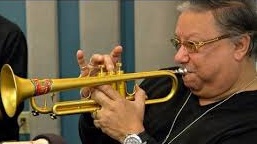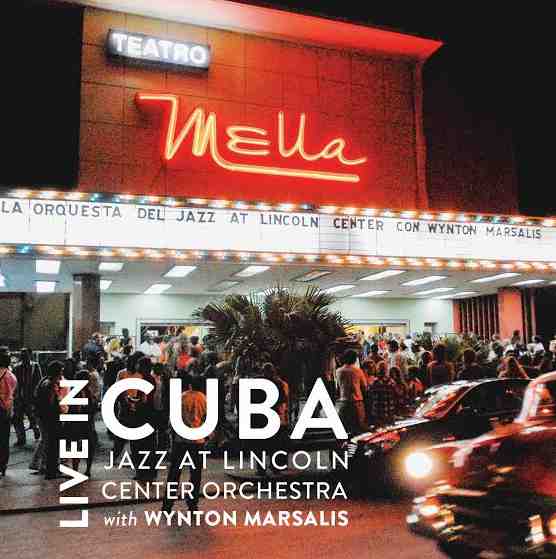Nick
Catalano is a TV writer/producer and Professor of Literature
and Music at Pace University. He reviews books and music for
several journals and is the author of Clifford
Brown: The Life and Art of the Legendary Jazz Trumpeter,
New York
Nights: Performing, Producing and Writing in Gotham
and A
New Yorker at Sea. His latest book, Tales
of a Hamptons Sailor, is now available. For Nick's
reviews, visit his website: www.nickcatalano.net
Even
a cursory analysis of output by Cuban musicians and composers
in the last half century or so yields strong evidence of noteworthy
achievement which, primarily because of political dispute, economic
embargo and cultural isolation, has been virtually ignored.
The musical spectrum involved is quite broad but a review of
Cuban distinction in jazz and affiliated musics goes a long
way in unearthing the significance of the Cuban musical tradition
and revivifying the prominence it deserves.
Composer
and multi-instrumentalist Mario Bauza (April 1911 -- July 1993)
trained as a classical musician (a characteristic of most Cuban
jazz virtuosi) and played clarinet in the Havana Philharmonic
at age nine. At 14 he recorded a Charanga in New York with legendary
classical composer/conductor Antonio Maria Romeu. In 1933, as
trumpeter/musical director for Chick Webb, he met and began
a long association with Dizzy Gillespie which resulted in “Cubop”
– the earliest form of Latin jazz. Their collaboration
continued through their years in Cab Calloway’s band and
would need multiple Ph.D dissertations to analyze its complexity
and revolutionary quality. Suffice it to say that Gillespie’s
(and Charlie Parker’s) bebop had apotheosized the American
music (work songs, blues, gospel minstrel) largely based on
West African traditions brought to the Americas but their jazz
was slavishly attached to the 4/4 and 2/4 time signatures of
European composers. When Gillespie worked with Bauza he realized
that the great polyrhythmic tradition of the West Africans (avoided
by puritanical North Americans) took hold in Latin America and
for modern jazz to take full advantage of this rhythmic richness
it had to incorporate the time signatures of Latin music.
It
is well known that when Bauza developed the 3-2/2-3 clave concept
and introduced Gillespie to Havana-born conguero Chano
Pozo whom Dizzy inserted into his big bebop band, Afro-Cuban
jazz became an instant hit (c.f. the Gillespie-Pozo collaboration
“Manteca”) and has steadily grown to become a staple
of modern music.
What
many fail to acknowledge is that despite Castro’s revolution
in 1958, the high standards of Cuban conservatories, the deeply-rooted
popularity of a variety of sophisticated local musics, and the
relentless prominence of musicianship in even the poorest families,
the development of Cuban prodigies has continued unabated.
Interestingly,
since Cuban socialism assumed political control in 1958, the
list of Cuban musical luminaries has grown apace, and, while
some have sought to leave the island, politics has not always
been the reason. It is clear that opportunities for success
have always been greater in New York than in Havana.
There
are so many Cuban giants – the names Machito, Mongo Santamaria,
Marco Rizo, Chucho Valdes, Xavier Cugat, Chico O’Farrill,
Candido Camero, Ruben Gonzalez, Carlos Valdez, Gonzalo Rubalcaba,
all emanate from Havana and came to America both before and
after the revolution. To summarize their accomplishments would
take more space than we have here.
In
my years as a jazz reviewer, I have often written about the
music of two of the great musician/composers who long ago emigrated
from Cuba; just last month I heralded a relative newcomer .
. . the parade continues.
 When
Paquito D’Rivera arrived in New York in 1981, he became
an instant phenomenon. He wisely chose to display his prodigious
improvisational saxophone technique in his initial CDs, club
and concert performances and media stints. He quickly amassed
a mountain of Grammys (14 at this writing) gaining huge popularity
and musical celebrity. But there was still more to come.
When
Paquito D’Rivera arrived in New York in 1981, he became
an instant phenomenon. He wisely chose to display his prodigious
improvisational saxophone technique in his initial CDs, club
and concert performances and media stints. He quickly amassed
a mountain of Grammys (14 at this writing) gaining huge popularity
and musical celebrity. But there was still more to come.
Like
Mario Bauza, D’Rivera was a classical music prodigy performing
at age ten with the National Theater Orchestra, studying at
the Havana Conservatory, and becoming a featured soloist with
the Cuban National Symphony at age seventeen. In New York, jazz
writers hailed him as “the Latin Charlie Parker,”
nevertheless, he steadily began to widen his reputation by unveiling
his classical compositional gifts and writing ambitious extended
works. These days he can be seen playing inventive clarinet
passages with his Chamber Jazz Ensemble and winning classical
awards and collecting honorary doctorates. The full extent of
his genius will take scholars many years to measure.(c.f. my
essay “The New Paquito D’Rivera” 11-7-2010
www.allaboutjazz.com)
Another
Cuban titan whose reputation soared the minute he landed at
New York’s JFK airport is Arturo Sandoval.  Again,
it was his phenomenal jazz (trumpet) playing that secured instant
fame (10 Grammys). However, Sandoval also was a Cuban classicist
(studying at age twelve) who, since his meteoric rise, has performed
with symphony orchestras worldwide. He has also received an
Emmy award for composing the underscore of the HBO movie based
on his life For Love or Country starring Andy Garcia.
One of the most unforgettable performances in modern jazz history
is Arturo Sandoval Live at the Blue Note in 2012 (Video
available on YouTube). His multi-instrumental/vocal pyrotechnics
on this outing serve nicely as a metaphor for anyone interested
in learning about the breadth and depth of the Cuban music scene
at the millennium.
Again,
it was his phenomenal jazz (trumpet) playing that secured instant
fame (10 Grammys). However, Sandoval also was a Cuban classicist
(studying at age twelve) who, since his meteoric rise, has performed
with symphony orchestras worldwide. He has also received an
Emmy award for composing the underscore of the HBO movie based
on his life For Love or Country starring Andy Garcia.
One of the most unforgettable performances in modern jazz history
is Arturo Sandoval Live at the Blue Note in 2012 (Video
available on YouTube). His multi-instrumental/vocal pyrotechnics
on this outing serve nicely as a metaphor for anyone interested
in learning about the breadth and depth of the Cuban music scene
at the millennium.
The
Cuban virtuosi keep coming. Just a couple of months ago I reviewed
a concert given by Grammy nominated composer/pianist Elio Villafranca,
classically trained at the Instituto Superior de Arte in Havana.
This latest edition in the parade of Cuban musical cognoscenti
sits on the faculty of The Juilliard School and has recently
triumphed with a composition dubbed Cinqué: Suite
of the Caribbean – which captures the almost extinct
music of the African Congo.
No
American agency has championed the cause of Cuban music more
than Jazz at Lincoln Center. Since its inception JALC has continually
included productions of Afro-Cuban sounds in its seasonal concert
series; and, in 2010, in anticipation of the recent Obama-led
transformation in Cuban-American relations, JALC artistic director
Wynton Marsalis brought the Center’s orchestra to Havana
for a historic concert and live recording. The resulting CD
on Blue Engine Records, Live In Cuba (available August
21), “is a document of the two nations’ indelible
cultural connections, of a journey into uncharted musical territory,
and of some of the world’s most virtuosic musicians sharing
a stage.”
 Recorded
in front of huge sold-out crowds over three nights at Havana’s
Mella Theatre, Live In Cuba includes the orchestra
playing Duke Ellington standards, classic Afro-Cuban selections,
and new compositions from the band members. On Disc 1 bassist
Carlos Henriquez composed and arranged a burner dubbed “1,
2/3’s Adventure” which recalls some of the Latin
shout bands of yore (some of which I played in i.e. Tito Rodriguez,
Tito Puente). A stunning piano solo from Don Nimmer highlights
the track along with Henriquez’ bass improvs and trumpeter
Marcus Printup delights with a solo reminiscent of the Latin
masters of old. A tribute to legendary Bolero composer Ernesto
Duarte is delivered featuring Bobby Carcasses singing Duarte’s
“Como Fue.” This tune was often referenced by Desi
Arnaz and his eminent arranger Marco Rizo on the old I Love
Lucy show.
Recorded
in front of huge sold-out crowds over three nights at Havana’s
Mella Theatre, Live In Cuba includes the orchestra
playing Duke Ellington standards, classic Afro-Cuban selections,
and new compositions from the band members. On Disc 1 bassist
Carlos Henriquez composed and arranged a burner dubbed “1,
2/3’s Adventure” which recalls some of the Latin
shout bands of yore (some of which I played in i.e. Tito Rodriguez,
Tito Puente). A stunning piano solo from Don Nimmer highlights
the track along with Henriquez’ bass improvs and trumpeter
Marcus Printup delights with a solo reminiscent of the Latin
masters of old. A tribute to legendary Bolero composer Ernesto
Duarte is delivered featuring Bobby Carcasses singing Duarte’s
“Como Fue.” This tune was often referenced by Desi
Arnaz and his eminent arranger Marco Rizo on the old I Love
Lucy show.
Disc
2 includes “Limbo Jazz,” a piece by Duke Ellington
arranged by tenor saxist/clarinetist Victor Goines. Ellington
addressed his interest in latin/Calypso music with this creation
based on the chord changes to “Happy Birthday.”
Delightful soloing from trumpeter Ryan Kisor and baritone saxist
Joe Temperley highlight the tune. On Dizzy Gillespie’s
“Things To Come” -- a rapid-fire standard arranged
by Gil Fuller -- we hear Wynton Marsalis soloing with up tempo
articulation reminiscent of his early days with Art Blakey.
The
Cuban audience reception to the band’s stellar performance
adds an element of nostalgia to the recording and presages a
new era in Cuban-American musicalizing. The recording should
help pave the way for new scholarship about the Cuban masters
of yore and introduce young listeners to the often overlooked
musical heritage of this contentious island in the Caribbean.